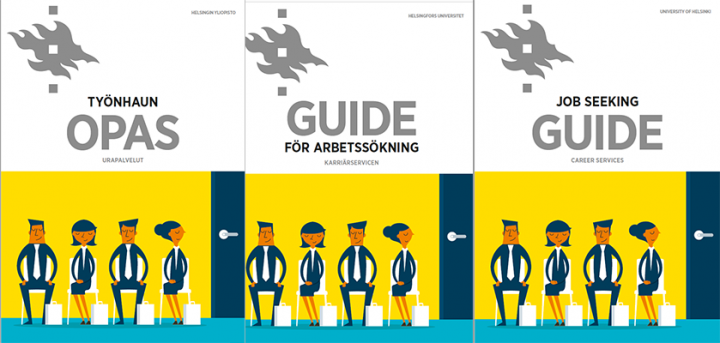Cover letters are also known as application or motivation letters. Their main purposes are to highlight your motivation, skills and strengths, and demonstrate your suitability for the position. A cover letter can include examples of your skills and concrete examples of how you have enhanced them. Your cover letter should give an overview of you, whereas your CV provides detailed information on your education and work experience.
Using the three-part structure presented below may help you write a cover letter. The maximum length of a cover letter is one page.
First part of the cover letter: Why?
Carefully consider how to begin your cover letter – you want to catch the reader’s attention with the opening sentence. You can use your imagination and creativity. The letter need not (and perhaps should not) begin with a sentence such as: “I am a 23-year-old geography student.”
A good cover letter immediately gives the reader a clear idea of why you are interested in the position. Often, the first question in the reader’s mind is ‘why’: “Why are you applying for this job? Why are you interested in this position? Why would you like to work for our organisation?” Consequently, it is important that you tailor your application for each position to highlight your motivation and interest in the specific post.
Find out what the organisation considers important and try to link it to your profile throughout your cover letter. Good sources of background information include the organisation’s value and mission statements and strategic plan, which can often be found online. You can also find information on current, important issues on the organisation’s social media channels.
Second part of the cover letter: What?
When you have described your motivation and interests, it is time to convince the reader with your skills and strengths. Another question the reader ponders is ‘what’: “What skills do you have? What will you bring to our work community if you are appointed? What have you done during your career?” Consider which skills and strengths are the most important for the prospective job. Read the job ad carefully because it usually sets out the most important requirements.
If you apply for a job with an open application, use various means and channels to find out what skills are key for the prospective job. For example, you can search for similar job ads from other organisations, look for the LinkedIn profiles of people in equivalent positions, or interview those working in similar roles.
Highlight your skills with concrete and concise examples: you can mention studies, duties, projects, volunteer work or elected positions that have enhanced your skills. However, concentrate on the skills most relevant for the position and keep your cover letter concise and fairly brief. Explain how your skills and strengths will benefit the employer, what needs you can meet with your skills, and how you can apply your skills in your future duties.
Third part of the cover letter: Who?
You can bring out your own personality especially at the end of the cover letter, for the reader is also wondering: “Who are you?” You can answer this question by describing your work methods, strengths and, for example, how you work on your own and with others. You can also refer to feedback you have received.
At the end of your cover letter, propose the next step: state that you are interested in meeting and discussing matters further. Also remember to add your contact details.
Layout of the cover letter
You can use the same visual layout for your cover letter and your CV. Your cover letter must clearly indicate your contact details, the date, the name of the recipient organisation and the position applied for. You can also mention the name of the individual recipient, if you know it.
For more tips on writing a cover letter, please see our Job Seeking Guide.
Ask for feedback on your cover letter and CV
Before sending your cover letter and CV, you should ask someone, such as a friend, fellow student or family member, to read the documents; another pair of eyes is always useful to spot typos, errors or omissions. You can also request feedback from the Career Services’ drop-in support for job search.
Questions to the feedback provider:
- What first impression do my cover letter and CV make?
- Do they convey my motivation clearly?
- Do they convey my skills clearly?
- What are the most important skills highlighted in my cover letter and CV?
- How does the text reflect my personality?
